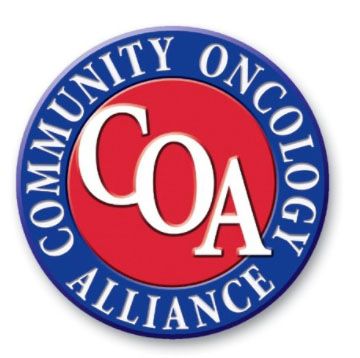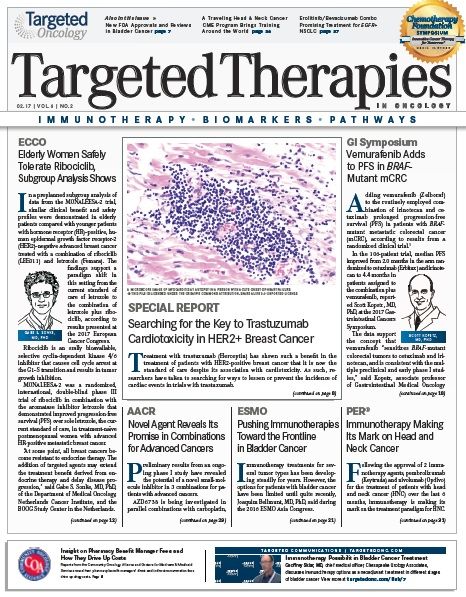Pharmacy Benefit Managers Fees Drive Up Drug Costs
A new trend in the way pharmacy benefit managers are collecting fees from pharmacy providers is driving up drug costs, gouging point-of-sale pharmacy operations, and playing havoc with spending at Centers for Medicare & Medicaid Services.

A new trend in the way pharmacy benefit managers (PBMs) are collecting fees from pharmacy providers is driving up drug costs, gouging point-of-sale pharmacy operations, and playing havoc with spending at Centers for Medicare & Medicaid Services (CMS), according to recent reports from CMS and the Community Oncology Alliance (COA).1,2
Direct and indirect remuneration (DIR) fees have traditionally involved PBMs collecting a percentage of drug costs from pharmacy providers, via rebates and pharmacy concessions, and reporting those amounts to CMS. Since 2013, PBMs have been accounting for those fees in less transparent ways and collecting the fees well after beneficiaries have received the drugs, making it harder for CMS to oversee spending under Medicare Part D.
DIR fees are causing Part D beneficiaries to pay cost shares that do not reflect the actual lower prices of the drugs, and beneficiaries are moving faster through Part D benefit phases to the catastrophic phase of coverage, where Medicare costs are potentially higher, according to the CMS and COA reports. CMS stated that DIR fees more than doubled over a 3-year period, rising to $23.6 billion in 2015 from $10.5 billion in 2012.
Part D drugs include the costly new spectrum of immuno-oncolytic drugs, and the at percentage DIR fees can potentially be very lucrative for PBMs, according to the COA study, which was performed by Frier Levitt.
“DIR fees charged by PBMs harm patient pocketbooks and care,” said Jeffrey Vacirca, MD, the new president of COA and a practicing medical oncologist and CEO of New York Cancer Specialists on Long Island, NY. “The fees drive the cost of vital, but expensive, cancer drugs even higher; increasing patient out-of-pocket costs; and driving patients in the ‘doughnut hole,’ where co-pays are higher. The costs also force too many patients to cut back or even abandon their treatment, jeopardizing their care and threatening their lives.”
In response to the criticism, the Pharmaceutical Care Management Association (PCMA) contended that “DIR reduces premiums for Medicare Part D beneficiaries, which leads to lower costs for the federal government” and higher satisfaction for Part D enrollees.
However, CMS, in its report, stated that DIR fees give only an artificial appearance of lower Part D costs, that they force the government to pay out more in reinsurance costs for the final catastrophic phase of coverage under the Part D benefit. When these costs are added in, the total drug cost is much higher for CMS. For example, in 2010, the average Part D plan liability per beneficiary was roughly $800 and the reinsurance cost was about $400. In 2015, the plan liability per beneficiary was about $670 and the reinsurance cost was $870.
Annual DIR fees have also risen sharply and are now outpacing the steady growth in Part D spending, COA and CMS noted in their reports. In 2010, DIR fees amounted to $8.7 billion of the net $77.5 billion Part D drug spend. In 2015, DIR fees jumped to $23.6 billion and net drug costs to $137.4 billion.
DIR payments are factored into CMS’s calculation of nal Medicare payments to Part D plans, which are managed by PBMs. For years, PBMs received additional compensation at the point of sale pharmacy—that served to change the final cost of the drug for the payer (the price paid to the pharmacy for the drug). CMS said it had noticed a “growing disparity” between gross Part D drug costs, calculated based on the cost of drugs at the point of sale, and net Part D drug costs, which account for all DIRs.
Because beneficiaries’ cost-sharing responsibility is determined at the point of sale and DIR fees are calculated much later, the rebates and price concessions do not lower the cost of drugs to beneficiaries. Also, because Medicare pays the cost-sharing burden for millions of low-income beneficiaries, rising DIR payments increase Medicare costs. At the catastrophic phase of Part D coverage, Medicare liability is around 80%.
PBMs contract with a network of providers that include free-standing retail pharmacies and physician-run medical practices, including community oncology practices that have integrated on-site pharmacies or dispensing facilities, according to the COA report. In January 2017, COA surveyed practices that provide pharmacy services to cancer patients and found that the average amount in DIR fees paid per practice was more than $82,000, with the highest amount reported to be over $750,000. The report said these fees are often described by PBMs as being designed to ensure that pharmacy operations meet performance and quality standards. However, the report said the fees are generally fixed percentages of drug prices. Therefore, being inflexible, they do not truly incentivize quality, the report said.
References:
- Medicare Part Ddirect and indirect remuneration (DIR) [news release]. Washington, DC: CMS; January 19, 2017. https://www.cms.gov/Newsroom/MediaReleaseDatabase/Fact-sheets/2017-Fact-Sheet-items/ 2017-01-19-2.html. Accessed February 1, 2017.
- Frier Levitt, LLC. PBM DIR fees costing Medicare and bene ciaries: investigative white paper on background, cost impact, and legal issues. Community Oncology Alliance website. https://www.communityoncology.org/ wp-content/uploads/2017/01/COA_White_Paper_on_DIR-Final.pdf. Published February 1, 2017. Accessed February 1, 2017.

Survivorship Care Promotes Evidence-Based Approaches for Quality of Life and Beyond
March 21st 2025Frank J. Penedo, PhD, explains the challenges of survivorship care for patients with cancer and how he implements programs to support patients’ emotional, physical, and practical needs.
Read More